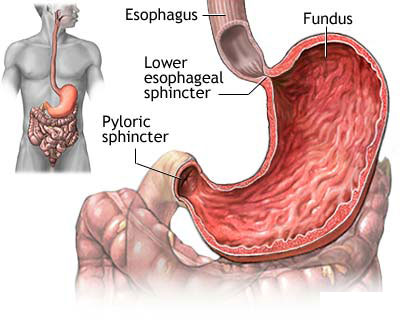Understanding what Stomach Ulcers are

This last week I had two patients come into the clinic with similar complaints. They were experiencing a burning sensation in their upper abdomen area (above the belly button) and pain when pressing just under their breast bone.
Food and stress both made the pain worse and they had recently been experiencing nausea for no reason. As it turned out, they both had stomach ulcers.
A stomach ulcer (more appropriately called a peptic ulcer) occurs when the protective mucosa in your stomach that normally keeps you safe from all the acid down there begins to wear away, leaving your tissue exposed.
It is often associated with a bacterium known as Heliobacter pylori (H. Pylori) however other reasons, such as chronic aspirin or ibuprofen ingestion, can cause them as well. An ulcer can occur in the stomach itself (known as a gastric ulcer) or just outside the stomach in the first portion of the small intestine, called a duodenal ulcer.
Typical symptoms are what you would expect if your acid was eating away your tissue! Burning pain, gnawing pain, abdominal pain, fullness in the abdomen, nausea, bloating, pain just under the breast bone or rib cage, and loss of appetite are common.
A gastric ulcer is usually worse with food (because the ulcer is in the stomach and the acid content increases with food) whereas the duodenal ulcer is typically worse a few hours after a meal as the food travels out of the stomach into the small intestines.
More concerning symptoms are vomiting blood, having black tarry stools (because of the digested blood) or if an ulcer were to perforate leading to emergency abdominal surgery. Bleeding ulcers often cause a person to lose iron and therefore become iron-anemic, which may show up on routine blood work.
If you enjoyed this post, please consider to leave a comment or subscribe to the feed and get future articles delivered to your feed reader.



Comments
No comments yet.
Sorry, the comment form is closed at this time.